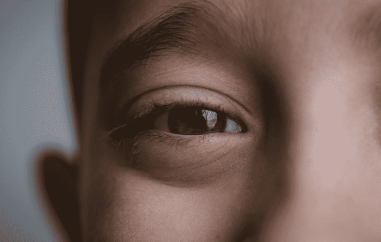Insight into Eye Health: Protecting Your Vision for a Lifetime
 Our eyes are not only the windows to the soul but also essential for experiencing the world around us. From admiring breathtaking landscapes to reading beloved books, our vision enriches our lives in countless ways. However, maintaining optimal eye health is often overlooked until problems arise. In this article, we delve into the importance of caring for our eyes and explore strategies for preserving vision for a lifetime.
Our eyes are not only the windows to the soul but also essential for experiencing the world around us. From admiring breathtaking landscapes to reading beloved books, our vision enriches our lives in countless ways. However, maintaining optimal eye health is often overlooked until problems arise. In this article, we delve into the importance of caring for our eyes and explore strategies for preserving vision for a lifetime.
The Importance of Eye Health: Understanding Vision and Function
Vision is one of our most precious senses, allowing us to perceive shapes, colors, depth, and movement. The eyes are complex organs comprising various structures, including the cornea, lens, retina, and optic nerve, all working together to transmit visual information to the brain.
Regular eye examinations are essential for maintaining optimal eye health and detecting potential issues early. Eye exams can detect refractive errors such as nearsightedness, farsightedness, and astigmatism, as well as screen for common eye conditions such as glaucoma, cataracts, and age-related macular degeneration (AMD). Early detection and treatment of these conditions are critical for preserving vision and preventing irreversible damage.
Protecting Your Eyes: Tips for Maintaining Eye Health
In addition to regular eye exams, there are several lifestyle choices and habits that can help protect and preserve vision:
- Healthy Diet: A balanced diet rich in fruits, vegetables, and omega-3 fatty acids is beneficial for eye health. Foods such as leafy greens, citrus fruits, nuts, and fish contain nutrients like vitamins A, C, and E, as well as antioxidants that support eye health and reduce the risk of age-related eye diseases.
- Eye Protection: Wearing appropriate eye protection, such as sunglasses with UV protection and safety goggles, can shield the eyes from harmful ultraviolet (UV) rays, debris, and injuries during sports or hazardous activities.
- Regular Breaks: For those who spend extended periods staring at screens, taking regular breaks to rest the eyes and blink more frequently can reduce digital eye strain and alleviate discomfort associated with prolonged screen time.
- Proper Hygiene: Practicing good hygiene, including washing hands frequently and avoiding touching the eyes, can help prevent the spread of infections such as conjunctivitis (pink eye) and reduce the risk of eye irritation and discomfort.
- Quit Smoking: Smoking is linked to an increased risk of developing several eye conditions, including cataracts, AMD, and diabetic retinopathy. Quitting smoking can significantly reduce the risk of these conditions and improve overall eye health.
Understanding Common Eye Conditions: Signs, Symptoms, and Treatments
Despite our best efforts to protect our eyes, certain eye conditions may still develop over time. Being aware of the signs and symptoms of these conditions can facilitate early detection and prompt treatment. Some common eye conditions include:
- Refractive Errors: Refractive errors, such as nearsightedness (myopia), farsightedness (hyperopia), and astigmatism, result from irregularities in the shape of the eye or cornea. Corrective measures such as eyeglasses, contact lenses, or refractive surgery can help improve vision.
- Cataracts: Cataracts occur when the lens of the eye becomes cloudy, leading to blurred vision, glare, and difficulty seeing in low light. Surgical removal of the cataract and replacement with an artificial lens is the most common treatment for cataracts.
- Glaucoma: Glaucoma is a group of eye conditions characterized by damage to the optic nerve, often caused by elevated intraocular pressure. Treatment may involve medications, laser therapy, or surgery to lower eye pressure and prevent further damage to the optic nerve.
- Age-Related Macular Degeneration (AMD): AMD is a progressive eye disease that affects the macula, the central part of the retina responsible for sharp central vision. Treatment options for AMD may include medications, laser therapy, or injections to slow the progression of the disease.
- Diabetic Retinopathy: Diabetic retinopathy is a complication of diabetes that affects the blood vessels in the retina, leading to vision loss if left untreated. Managing blood sugar levels and regular eye exams are crucial for preventing and managing diabetic retinopathy.
Embracing a Lifetime of Healthy Vision
In conclusion, prioritizing eye health is essential for maintaining optimal vision and quality of life. By incorporating healthy lifestyle habits, protecting the eyes from environmental hazards, and seeking regular eye care, individuals can preserve their vision for a lifetime. As we continue to prioritize our eye health, we can enjoy the beauty of the world around us and embrace a lifetime of healthy vision.
Image by Cindy Parks from Pixabay









































